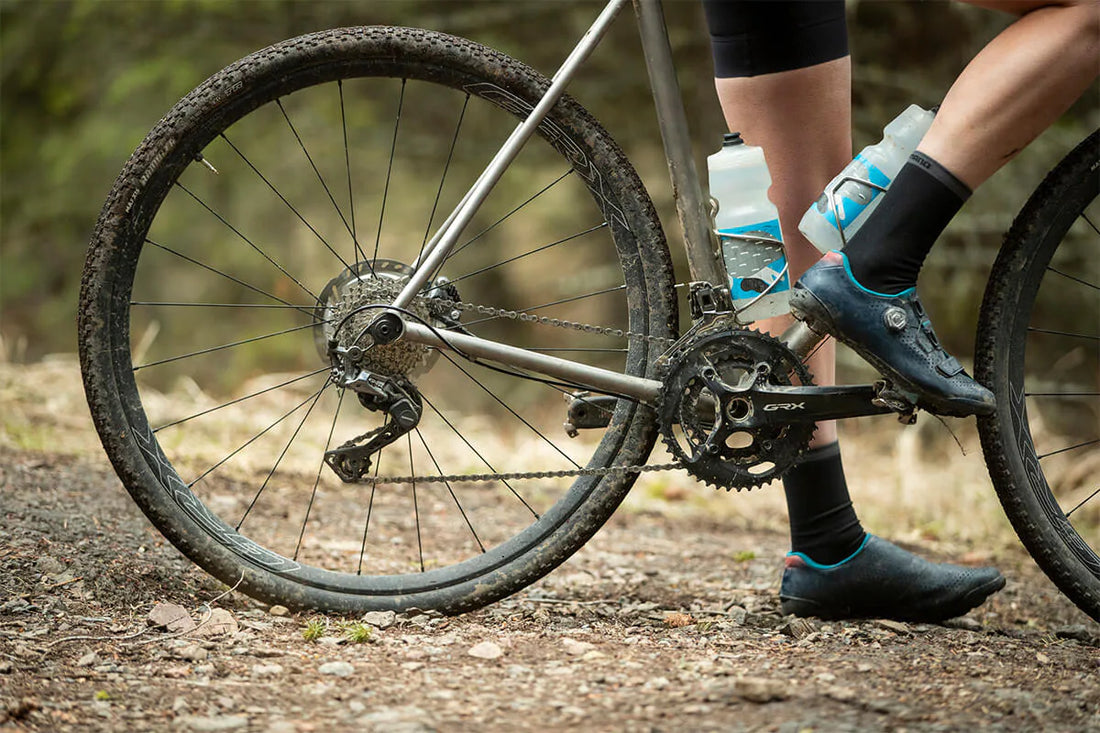With Shimano's GRX component line-up currently the only remaining of Shimano's major groupsets stuck on 11 speed (Dura-Ace, Ultegra, 105, XTR, XT, and SLX are now all 12 speed) it's probably not a huge secret that an updated GRX group is coming.
What's less certain, however, are the details of what a refreshed GRX might look like. Some of those changes are a foregone conclusion - it doesn't take a genius to speculate that the new group will be 12 speed, for example - but others are more of a maybe.
GRX is used for a huge variety of riding styles, including pro and amateur cyclocross, gravel riding and racing, off-road bikepacking and loaded touring. Each of those groups wants something different from GRX. My perspective is from the owner of "one bike" I use for cyclocross racing plus training on both paved and unpaved surfaces. I've divided my thoughts into 3 sections: sure thing, maybe, and unlikely.
An updated Shimano GRX group - the sure things
GRX is almost certain to be 12 speed in the future
Moving GRX to 12 speed will bring better parts interchangeability and consistency. Bet on it.
GRX Di2 will adopt the wireless Dura-Ace, Ultegra, 105 system design
Shimano's 12 speed road groups, in contrast, use a new, refreshed version of the Di2 electronic shifting system, in which the shifters are wireless, with no cable or wire running between the shifter and derailleur. Instead, both derailleurs are connected internally by wiring, as well as to a hidden (usually seat post) battery, and that system talks to the shifters wirelessly, with the shifters being powered by small coin-style batteries instead of the "primary" battery that powers the derailleurs.
The "maybe" category for an updated GRX group
GRX 12 speed might keep a mechanical group option, in addition to electronic
A case can be made that GRX users do extended tours, especially off-road bikepacking, during which no reasonable battery recharging option exists. Even though the batteries on a Di2 bike last for a very long time, mechanical drivetrains with physical cables that can be serviced in the field might be desirable for this type of rider. What's uncertain is whether there is enough demand to produce both electronic and mechanical groups.
Bigger cassettes and a rear derailleur with more capacity
12 speed Shimano GRX - unlikely predictions
Silver components
Will we see them in production when the new 12 speed gear hits? It seems unlikely. If you're in love with the silver look, there are some GRX silver 11 speed parts still in channels.
Mixing and matching MTB Di2 components into a Di2 group
Some mix-and-match has been possible between road and MTB Di2 components. For example, you can use 11 speed GRX Di2 electronic shifters in a 1x (single chainring) drivetrain with an XTR (MTB) Di2 rear derailleur. A rider might want to do this who wants a larger cassette cog than the GRX Di2 rear derailleur can accommodate.Unfortunately, this only works in 1x single chainring applications. If you want a double GRX crank, you need the GRX Di2 front derailleur, which can't in turn be used with the XTR Di2 rear derailleur. Confused yet?
Don't expect this to change with a future GRX Di2 12 speed group.
Single-chainring 1x only; with no double crankset option
SRAM's XPLR line of components is SRAM's answer to Shimano's GRX... er, maybe it's vice-versa? Regardless, these two groups go head to head and compete for marketshare. XPLR is single chainring only, with SRAM heavily invested in the 1x setup. Shimano, in contrast, continues to offer a GRX front derailleur and double crank for riders who want it.I think Shimano dumping the double crank is unlikely, so I've listed it here in my "unlikely, but possible" section.
There you have it - my predictions for a new, updated Shimano GRX. We'll check back following the inevitable launch to see how accurate I was.

